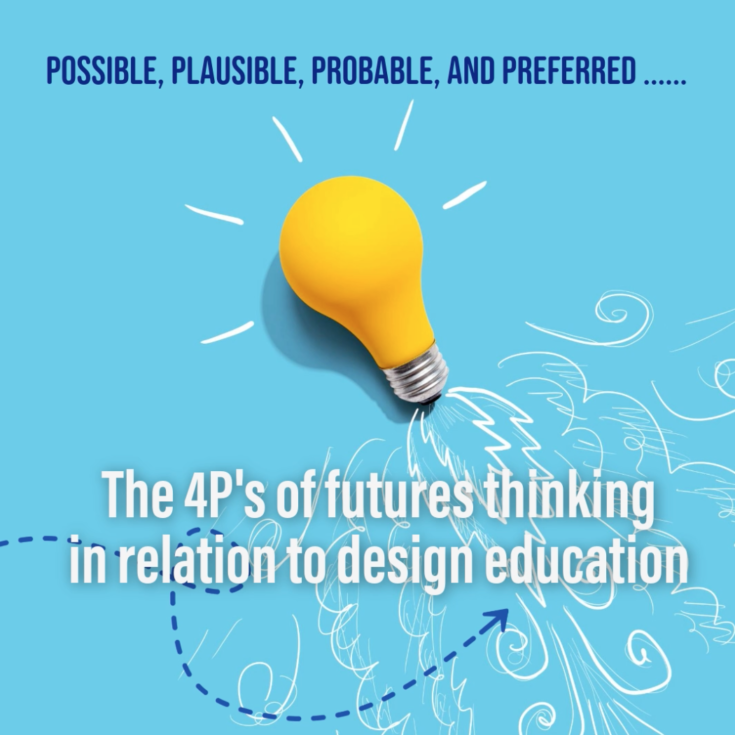In continuation of my earlier blog, the 4Ps of futures thinking—Possible, Plausible, Probable, and Preferred futures—can be a powerful framework for design education.
- Possible Futures – All the futures we can imagine, no matter how outlandish or unlikely.
Include this in your course outlines by encouraging students to explore the boundaries of their creativity and think beyond conventional design constraints. This phase can involve speculative design projects where students envision futuristic scenarios, technologies, or societal changes that might influence design. Activities could include brainstorming sessions, concept art, and speculative storytelling.
- Plausible Futures – Futures that could reasonably happen based on current knowledge and trends.
Help students to identify and analyse current trends, emerging technologies, and societal shifts that could influence design. This can involve research projects, trend analysis, and scenario planning exercises. Students learn to create designs that are innovative yet grounded in reality, making them more likely to be practical and implementable.
- Probable Futures – Futures that are likely to happen if current trends continue without significant changes.
Focus on developing skills and knowledge that prepare students for the most likely future scenarios in the design industry. This includes staying updated with industry standards, technological advancements, and user preferences. Courses could cover current best practices, software skills, and methodologies that align with probable industry developments.
- Preferred Futures – The future we most desire and work towards achieving.
Empower students to think critically about the impact of their designs and to align their work with personal, social, and environmental values. This involves teaching ethical design principles, sustainability, and human-centered design. Projects could encourage students to design solutions for social good, envisioning how design can contribute to a better world.
Currently, most college curriculums are way too focussed on the ’Probable’ future. Ideally, our curriculum needs an inclusion of all 4P’s, with added focus on the ‘Preferred’.
My course design ‘Design for Peace’ is very close to my heart and I hope it helps to initiate a dialogue with versatile, forward-thinking designers and design students, who are prepared to navigate and shape the future of their field, and in turn the world at large.

